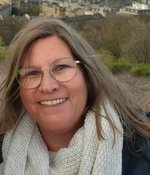Cop4Schools – Crossing Borders in Education

While the methods and techniques of remote sensing and digital image processing are used intensively in our society, profound background knowledge is not widespread. Space technology and Earth observation are key activities for our society in terms of research, innovation, economic wealth and growing job opportunities; but also, for fulfilling the UN Agenda 2030 Sustainable Development Goals. Facing global challenges, a qualified education in remote sensing technologies needs to start at school in order to sensitize young people for ecological issues and educate their technological competences at once. However, teachers must be informed about how remote sensing can act as a factor for successful school lessons, too: by combining colourful imagery and real-world applications with data and high-tech, their pupils can be fascinated and educated at the same time.
The action aims to develop and disseminate educational resources for secondary schools in Europe on Earth observation based on data and services of the Copernicus programme and its contributing missions. Cop4Schools will develop and evaluate interactive and digital teaching units making use of new media based on products of the Sentinels and contributing missions. Topics of the coupled human-environment system will be addressed in order to sensitize pupils for the challenges of Global Change and foster their action-taking competences. The resources will be implemented in the project’s online portal, in order to disseminate the materials free of charge to the public.
In addition to the course material, it is planned to develop modular, interactive exhibits to show how satellite data helps to better understand the planet and coupled human-environment systems. The main idea is to combine the fascination of technology and nature in order to foster the methodologic and media competences of pupils as future labour force. Hence, school curricula topics will be taught by utilizing propaedeutic learning and real Earth observation data. The main target group are pupils while teachers will be approached by accompanying workshops. It is planned to collaborate with partners across Europe, especially educational institutions being involved in ESA’s ESERO project. Accordingly, teaching resources and teacher trainings on remote sensing will cross the borders in minds and places. Besides the primary target groups, the developed educational resources will also be suitable for institutional adult training programmes. The hands-on exhibits should encourage interest in Earth observation data amongst pupils, students and the general public and are for use in lessons as well as during workshops, events or fairs.
Outputs and Results:
- 6 digital learning units with easy-to-use image processing tools (German, Estonian, English)
- One mini MOOC on “Introduction to Earth Observation and Copernicus” (German, Estonian, English)
- translation of learning units into one further language spoken worldwide (e.g. Spanish)
- translations of learning units into other European languages depending on own contributions of other FPCUP partners
- accompanying teacher workshops (German, English, Estonian)